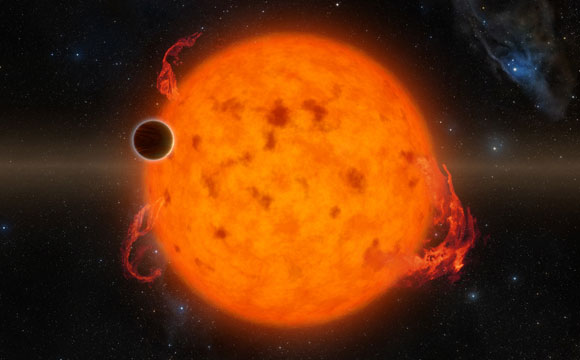Exoplanet Detection Methods
Ever since space exploration was a thing, one of the biggest questions asked is about the possibility of someone else out there. Are we alone in this vast universe? Or are there some extraterrestrial lives possible in other galaxies? For all that, we have to find some planets in the first place to know if it is capable for a star to host a planet, and a planet to host life. Here are 5 different ways according to NASA on how to find an exoplanet.
Exoplanet Detection
There are many ways to detect the presence of a planet. Radial Velocity and Transit Light Curve methods are the most commonly used methods to detect a planet. Around 5000 planets have been found through these 2 methods alone.
1) Radial Velocity
Why does the Earth move around the Sun? It's because of gravitational pull of the Sun is greater than that of the Earth. But the Earth and other planets also have a gravitational field. So, shouldn't the Sun move a bit as well? Actually, it does, and this event is called as wobbling. It is possible to find exoplanets by finding if other stars wobble as well. How do you know its wobbling? This is done by taking in radial velocity spectroscopy from spectrographs like the HARPS and HIRES. There is a difference between the spectral lines due to the doppler effect. The doppler effect is an effect when waves (light or sound or waves in general) compress or stretch out. This leads to compressed waves to be blue shifted when the star moves towards us and elongated waves to be red shifted when the star moves away from us. Using these methods and calculations, we can figure out the size of the exoplanet/exoplanets and what kind of relationship it has with its host star.
2) Transit Light Curve
Most exoplanets are found through the transit method. It is a pretty straightforward method which is more commonly used. The light that reaches us from the star is greatly dimmed when the planet transits in front of the observer and the star, kind of like an eclipse. When you plot the intensity of light, if there is a planet, you will be able to see a steady dip in the intensity because of the exoplanet.
3) Direct Imaging
As the name would suggest, Direct Imaging consists of capturing images of exoplanets directly, which is possible by searching for the light reflected from a planet's atmosphere at infrared wavelengths. They only work best for exoplanets which are far away from their host stars. It also works best for planetary systems that are positioned face on when observed from Earth. So far there have been only 62 planets found through direct imaging.

4) Gravitational Microlensing
This effect was predicted by Albert Einstein back in 1936 using his general relativity. When one star in the sky appears to pass nearly in front of another, the light rays of the background source star become bent due to the gravitational "attraction" of the foreground star. The same thing works for exoplanets as well as the light from the background star can be observed being warped and bent by the mass of the planet. The biggest advantage of using this method is that it is the only known method of discovering planets at truly great distances from Earth and is capable of finding the smallest of exoplanets. Around 152 planets have been discovered using this method.
5) Astrometry
Remember for radial velocity method we try to measure the wobble of the star by the doppler effect? There is another method to measure the wobble of a star. Astrometry is the method that detects the motion of a star by making precise measurements of its position in the sky. This new technique can also be used to identify planets around the star by actually measuring the tiny changes in the star's position as it wobbles around the center of mass of the planetary system. So far, only 2 planets have been discovered using this method.
Overall there has been thousands of planets that were found through old and new methods. It is certain that even better methods will be discovered in the future to give us a new perspective on how we perceive exoplanets. The JWST has also found it's first exoplanet LHS 475b which is a lot like Earth in more ways than one. It is a fact that Astronomy is going to advance by leaps and bounds due to new technologies like the JWST and the TESS which gives us a better understanding of the universe.




Informative!
ReplyDelete